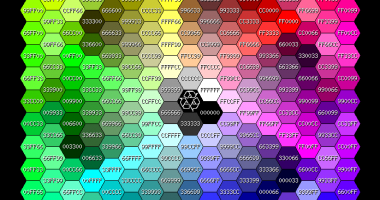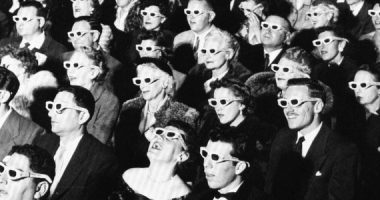In spite of the rapid effervescence of open, participative projects taking place in cultural institutions, they remain a recent phenomena, in what we could call Beta stage. We think that Global Screen is a groundbreaking exhibition in many senses, but we are also aware of its shortcomings, which arise precisely from its newness and the lack of precedents. For this reason we prefer to think of Global Screen as a first step along a road to be travelled over the next few years, rather than as a milestone in the evolution of exhibitions.
Opening up an Exhibition
Global Screen’s main contribution is that it is based on a new exhibition model in which curators do not simply devise a prescriptive discourse, but instead open empty spaces within it, which audiences can fill with their own content. The exhibition is thus no longer a closed creation, fully controlled by the curators. Instead, the curators allow the audiences’ perspectives to become part the fabric of the exhibition, and these perspectives complement and may even contradict their own.
Because we know that an open exhibition goes beyond simply allowing audience interaction, we’ve also decided to make the process of creation more transparent. This means that we also used the virtual platform to start drawing attention to the incubation process. It also means that once the exhibition is over, we can create a virtual archive of all its content, so that it can continue to provoke thought and generate knowledge. We don’t see this work in progress simply as a work diary, but as a place in which to express ideas and questions that arise from the work we have done.
Managing Participation
While audience interaction in exhibitions is nothing new, Global Screen has approached it in a way that had never been done before at the CCCB: by including participation as an intrinsic part of the project right from the incubation stage. This means that audience contributions aren’t considered an add-on or a related activity, they are actually integrated within the exhibition as one of its main characteristics. Without them, the exhibition would loose much of its meaning and its essence.
One of the basic ideas of the exhibition is to open up cultural centres to everybody, and to offer audiences the opportunity to exhibit their own creations in a space that has traditionally been set aside for “artists”. But along with this new paradigm come new challenges. In I+C+I; 2.0 from interaction to co-creation we had already started to explore achievable levels of audience participation and the possible problems that could arise from this interaction. Global Screen is structured along two main lines: “view point” and “counterpoint”. The View-Point shows the discourse of the curators, while the Counterpoint is an open window that accepts and displays the works submitted by users. In this case, audience participation is inherent to this part of this exhibition.
Although it seems that placing limits on participation allows us to have more control over it, it also poses a new challenge: how to regulate audience contributions. It is easy to accept that there need to be some technical prerequisites for reasons related to the set up of the exhibition, such a particular video format or duration. But do we need to filter contributions based on quality criteria too? One of the underlying ideas of an open exhibition is precisely the ongoing questioning of what art is and who can decide what it is. With this in mind, we decided that it would be contradictory to select the works submitted by users based on aesthetic reasons. Meanwhile, although the works have to deal with one of the themes defined by the curators in the seven screens these themes are very general, so it is sometimes difficult to decide whether or not the works submitted do actually fit in. In this case, we chose to use a “soft” filter, accepting all works which have even a slight link to the screen chosen by the author. This has given the creators greater freedom when it comes to offering their visions, and it probably also transformed the original idea of what was to be shown in the Counterview.
These regulation-related issues highlight a new factor that now has a role in the process of creating an exhibition: participation design. Because a project must be publicised first, in order to obtain an audience response. The most interesting aspect of the process is the potential to create synergies with different groups. In this case, these synergies not only feed content into the Counterview section, it also allows us to create new knowledge and action networks.
The Contribution Economy
But once we’d established synergies with these groups and networks to help us find creators to participate in the Counterview, we faced another key issue that affects whether or not audiences decide to submit their works : the compensation they are offered. In the case of Global Screen, the reward for authors is the opportunity to exhibit their work at the CCCB. The fact that artists participating in the Counterview do not receive any payment, while those in the View-Point section do, as do all the other people working on the project, has been one of the most critiqued elements of Global Screen. But what would a fair economic distribution look like? This debate, which we had began at the I+C+i: Distributed Economy session, remains open and for the time being we don’t have solutions for the exhibition sphere.
Another option for stimulating participation is awards. The Global Screen team has often considered organising a competition to reward creators. The problem is finding the right formula for organising it. On one hand, if we want to treat the Counterpoint as a participatory space that is separate from the supervision of curators, it makes no sense for the award to be judged by a panel of “experts”. On the other hand, the option of an audience award also poses several problems. The main one is probably linked to the fact that there is no deadline for the submission of works. This makes it impossible to designate a start and end date for voting, which means that all the videos would not have the same number of days on which to receive votes.
Apart from the challenge of finding an economy of distribution that is both fair and appropriate to the project, another of the main challenges of an open exhibition is copyright management. The CCCB requires contributors to the Counterpoint to transfer copyright of their works to the Centre, so that it can show them without problems. But this transfer of rights is not reciprocal, as Eduardo Pérez rightly notes in his blog, because the Centre does not release the exhibition material. The problem is precisely that the CCCB does not own the right to this material, it only has the rights to exhibit them. As Global Screen deals with audiovisual works, a field in which remix and the use of fragments of video and audio by third parties is the order of the day, the complexity of copyright management increases.
A New Model
We think that beyond its possible successes and contradictions, Global Screen contributes to an essential debate about the present-future of the “exhibition” genre in its two aspects: physical and virtual. The new digital media tools influence the physical mise en scène, and the intrinsic materiality of the physical version also pervades the virtual worlds. By conceiving an exhibition project based on this feedback loop, we have been able to place value on the incubation stage of the exhibition, give formal autonomy to the digital version, and extend the project beyond its physical expression. The exhibition is also a further step in the process that is transforming the role of the “curator”, in the complexity of processes of co-creation with users, and in the networks and communities that must be integrated into cultural projects in which collective intelligence and creativity play an important role. Even so, it would be premature to draw definitive conclusions about a project that is still open on three levels (incubation, exhibition and post-exhibition) and that was conceived as a test bed in a foreseeable future in which the speed of change is perhaps the only constant. The speed of change and an abiding passion for learning.








Leave a comment